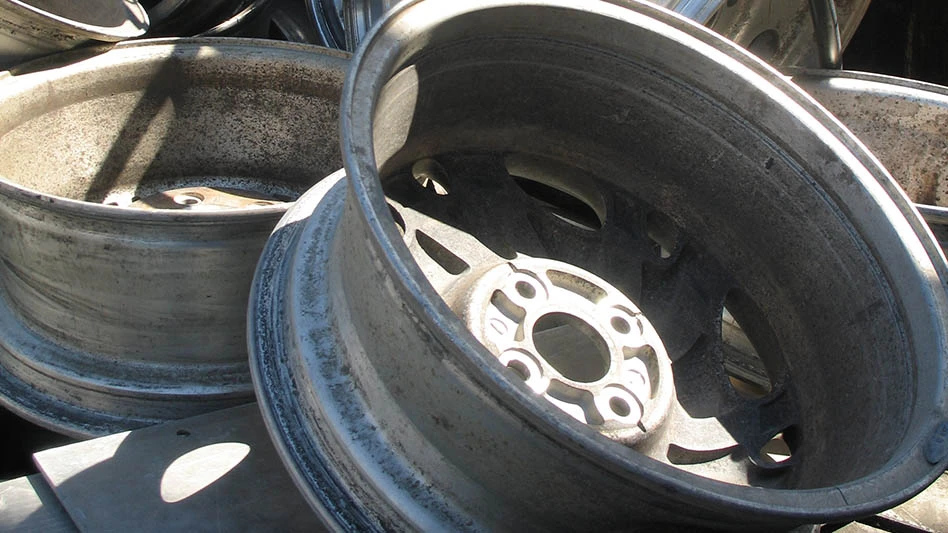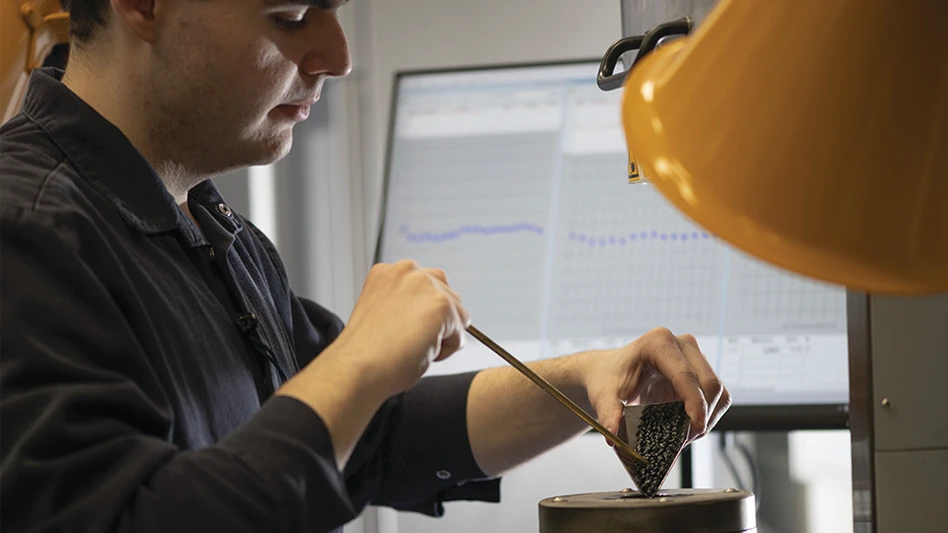 It could be argued that the plastics sector was once the Wild West of the recycling industry. With a lack of standard specifications when it came to buying and selling scrap, anything went. That is until the fall of 2013, when the two top organizations representing the plastics recycling industry combined forces to issue joint specifications and create a universal language for all individuals who trade plastic scrap. While the specifications were recently issued, they were a long time in the making, beginning nearly four years ago when plastics recyclers belonging to the Institute of Scrap Recycling Industries (ISRI), Washington, D.C., began to organize.
It could be argued that the plastics sector was once the Wild West of the recycling industry. With a lack of standard specifications when it came to buying and selling scrap, anything went. That is until the fall of 2013, when the two top organizations representing the plastics recycling industry combined forces to issue joint specifications and create a universal language for all individuals who trade plastic scrap. While the specifications were recently issued, they were a long time in the making, beginning nearly four years ago when plastics recyclers belonging to the Institute of Scrap Recycling Industries (ISRI), Washington, D.C., began to organize.
Finding a voice
While ISRI has always had members who recycled plastic, there wasn’t a dedicated place for these members to obtain information, share stories and discuss issues that impact plastic recyclers. In early 2008, a group of members from ISRI banded together to form the Plastics Recycling Council. The council was to be ISRI’s premier source of information regarding plastic recycling for its members.
With the council up and running, members quickly set about the task of developing tools and training materials. First on the list was developing a comprehensive agenda for workshops at ISRI’s annual convention, www.isriconvention.org. The workshops have become a staple of programming at the ISRI Convention & Exposition and provide participants with educational seminars on a host of topics, such as automotive plastics, plastics identification and in-depth discussions regarding the status of various resin markets.
ISRI’s efforts to provide education and training at its events help members stay current on what’s happening in the plastics industry. These training sessions have been as diverse and wide-ranging as the plastics recycling industry. As the plastics recycling industry continued to evolve, so did the Plastics Council. In October 2013, ISRI’s board of directors reorganized the Plastics Council and elevated it to be a Plastics Division. Within ISRI’s governance structure, divisions hold seats on the board of directors; councils do not. By giving plastics representation on the board, ISRI ensured that it is better able to respond to an ever-changing industry.
As the list of deliverables grew, members branched out to developing scrap specifications to help with business transactions. In an ideal world, the buying and selling of scrap plastics would go about unhindered; buyers and sellers would know exactly what the other wants and would come to terms accordingly. There would be no need to have a common vernacular as both parties would know exactly what is meant by “bulky rigids,” for example. Unfortunately, many terms have been used interchangeably, and this caused some confusion in the plastic recycling marketplace.
Addressing a common problem
A solution to this problem was the development of scrap specifications. Specifications are, in simplest terms, shorthand for scrap transactions. ISRI’s scrap specifications generally assign a word, number or letters to a specific scrap product followed by a brief item description, then a more detailed summary—the specification—of the material. The stated purpose of all ISRI scrap specifications is to assist scrap traders “in the buying and selling of their materials and products.” While some scrap traders will use them verbatim, others will not. ISRI’s specs are designed to be flexible and a starting point in contractual language.
ISRI’s scrap specifications, available for download at www.isri.org/ISRI/_ Program_and_Services/Commodities/Scrap_Specifications/ISRI/_Program_and_Services/Scrap_Specifications_ Circular.aspx?hkey=5c76eb15-ec00-480e-b57f-e56ce1ccfab5, are used in international as well as in domestic commerce. The scrap specs have been translated into numerous languages, such as French, German, Portuguese, Japanese, Korean and Chinese. The relevance of ISRI’s scrap specifications cannot be overstated, as some countries, such as China and India, use them as a basis for developing their regulations for the scrap industry.
Starting from scratch
As early as 2010, members of the then Plastics Council looked at the existing library of ISRI plastic specs and found that they were outdated and largely unused. This was because they didn’t reflect the markets and the state of the industry. Rather than amend a set of outdated specs, they decided to do something radical—they asked ISRI’s board of directors to delete them all and start from scratch.
As a first step, the Plastics Council specified items such as bale density and acceptable bale tying materials, listed prohibited materials and developed a list of defined terms. From there, the council set out to develop scrap specifications for plastic items that reflect the nature of today’s marketplace. Today, ISRI’s plastic scrap specifications cover materials such as PET (polyethylene terephthalate) mixed bottles, HDPE (high-density polyethylene) natural bottles, mixed unsorted Nos. 1-7 bottles and containers, mixed color HMW (high molecular weight) HDPE drums and mixed color HDPE buckets, to name a few.
While ISRI’s members were developing these plastic scrap specifications, members of the Association of Post Consumer Plastic Recyclers (APR), also based in Washington, were developing their own specifications. As independent associations, the development of these specifications continued without much consultation between the two groups. However, in trying to solve one problem, the associations inadvertently were creating another concern—that of dueling specifications. ISRI members, when working with APR members, might ask to use the ISRI specs as the basis of negotiation, while APR members might ask to use the APR specifications.
Members of both associations saw this as a potential problem for the plastics recycling industry and proactively sought to resolve the situation before it became intractable.
Finding common ground
In 2012, ISRI members and APR members came together to discuss how to resolve the problem of dueling specs. The solution was a simple one: Both groups would develop a Plastics Recycling Taskforce that would discuss grade types and provide information that would guide the development of scrap specs passed by the boards of either group. This information contained common items—definitions, percent allowed for contamination, etc. This would essentially make the specifications passed by either association the same. It is important to note, however, that the taskforce played an advisory role and could only suggest specifications for each association to adopt. While either association was free to accept or decline the work the taskforce submitted, in the end, each group adopted the language submitted largely unchanged.
While the concept sounds simple, as with most things, “the devil is in the details,” and developing common specifications was no easy task. To begin the process, both groups agreed to exchange their published scrap specifications and determine commonalities and differences. From there, they looked to see where existing specs could be amended or changed. Amending existing specifications to ensure they conform to the needs of two separate groups is quite a challenge. Based on this review, members of both groups agreed that it was best to leave existing, published specs as they were.
Instead, the taskforce looked at the needs of the industry that were not being met and developed scrap specifications for these areas. By coming to this agreement, both groups have been able to work successfully to develop several common specifications. Among the specs to be passed: bulky rigids, tubs and lids with bulky and tubs and lids without bulky.
Because of the agreement, whether using ISRI specs or APR specs, buyers and sellers of these grades can have a common basis to start negotiations.
Throughout this process, members of the taskforce also developed a deeper understanding of why each particular group approaches the same topic from a slightly different perspective. Both groups now comprehend each other better and have learned that what sets them apart is much less than what does not. Each side is in the business of buying and selling scrap plastic; each side needs the other to be successful in business ventures. To this end, the taskforce has shed light on the symbiotic relationship that scrap processors and reclaimers have with each other.
With the success the taskforce experienced, members are hopeful that trading within the scrap plastic industry will become a mundane experience. This will help the plastics recycling industry to mature, grow and thrive for the foreseeable future. It is with this goal that ISRI and APR will continue to work together in the future to the benefit of all of the plastics industry.
The author is director of member services and Plastics Division liaison at the Institute of Scrap Recycling Industries, Washington, D.C.

Explore the February 2014 Issue
Check out more from this issue and find your next story to read.
Latest from Recycling Today
- New recycling grant program launches in Massachusetts
- Tire Recycling Foundation names executive director
- Dock 7 named 2025 Exporter of the Year at New Jersey International Trade Awards
- Waste Connections reports ‘better than expected’ Q1 results
- Commentary: How EPR is transforming the packaging industry
- Acerinox names new North American Stainless CEO
- Greenwave closes 2024 books with red ink
- Steel Dynamics nets $217M on record shipments





